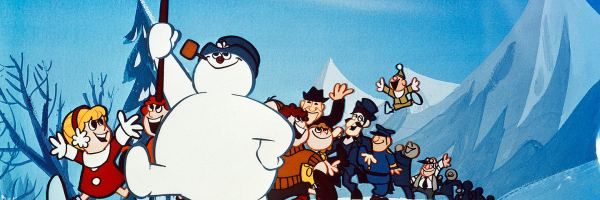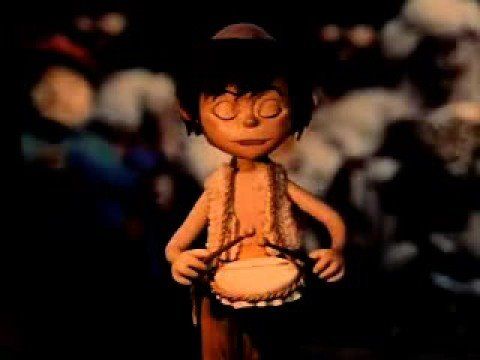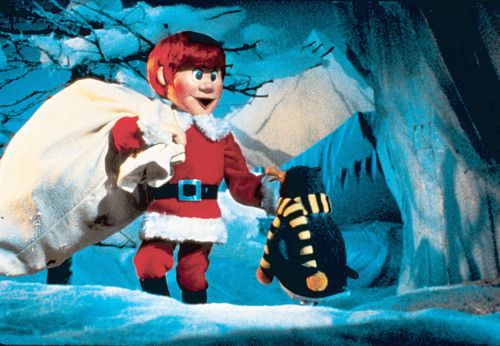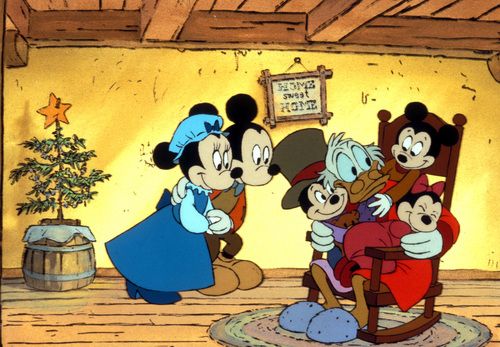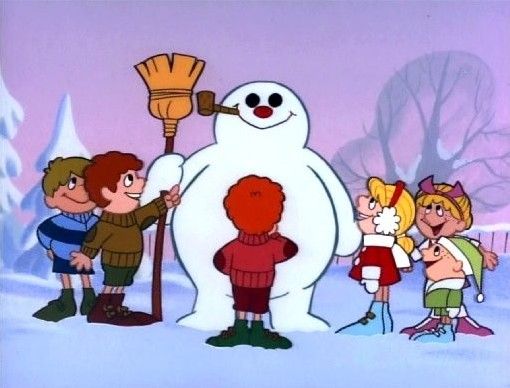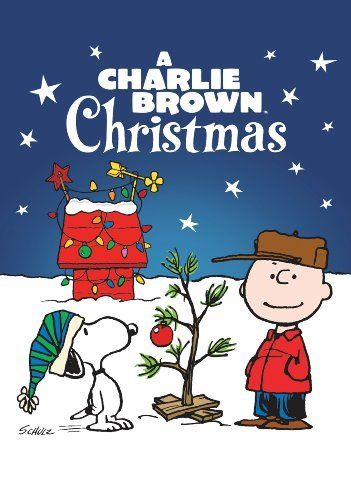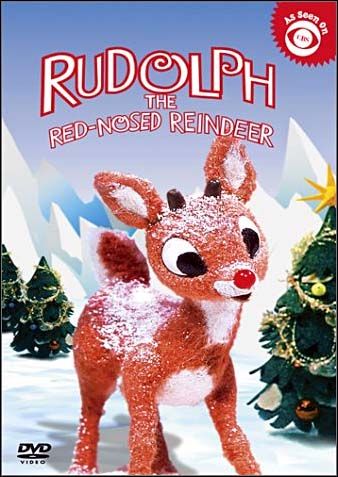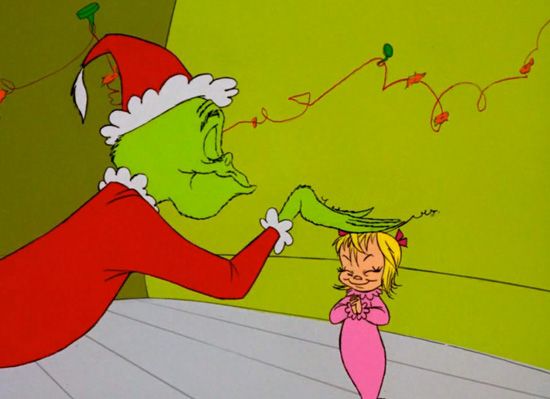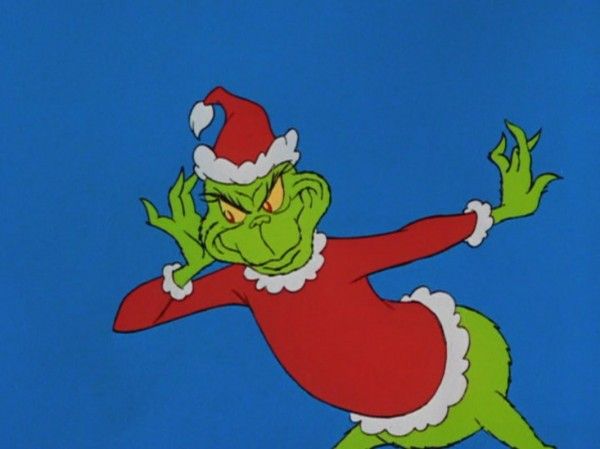You know stockings and holly and toys and bows, wreathes and candy and tinsel and mistletoe, but do you recall the most famous Christmas specials of all? Holiday TV programming is as festive as it goes and whenever you get to see it you can even say it glows. But now, for the first time the Elves are having a chance to rank the top Christmas TV specials based on festivity, soul and being not naughty but nice. We’ll leave the 10th up to you. No one wants an arguable runner-up on this list. We’ve gone into the TV Guides, settled down on the floor to avoid couch potatoes and replaced commercials with Christmas tunes; caroling them all to bring you the top 9 on the countdown. Cue the sleigh: our countdown starts at #9 after the jump.
#9 Shrek The Halls
The Shrek family was introduced to primetime television for the first time in 2007 on ABC to a blockbuster amount of viewers. Living up to a movie franchise’s standard is no easy task, but this special was able to include plenty of the gang from the big screen and humorous moments that outnumber the stripes on any candy cane. Short but sweet, it showed what Christmas can mean to different creatures, the fine line between family and friends, and it let us know that only an idiot thinks of the holidays as a step-by-step process to celebrate. Remember: the book "Christmas For Village Idiots" is only a guide. You have to fill in the blanks yourself. The Shrek franchise is no stranger to parodying fairy tales, but this Christmas special didn’t just make the holidays into a joke. It also coughed up some heart.
#8 The Little Drummer Boy
In 1968, this Rankin/Bass production was the third Christmas TV special out of the company, but its story was quite a bit older than even the song it was based on. More biblical than other airings of the festive season, a misanthropic orphan found his life changed forever after meeting the Three Wise Men on their way to Bethlehem. This stop-motion animated tale sponsored by the American Gas Association expanded on the original song by letting us know of events before the birth of Jesus Christ himself. This tale let everyone see the true origin and spirit of Christmas in its purest form, coupled with a simple drum spewing a beat you’re inclined to sing: “Pa, rum, pum, pum, pum.â€
#7 Santa Claus Is Comin’ To Town
The original song is owed the use of its name and was sung over radio in 1934, but it wasn’t until this stop-motion Rankin/Bass production in 1970 that people got an extended look into how Santa Claus and other Claus-related traditions came to be. It was a reimagining of the mythology of St. Nicholas. Rather than a pure retelling, it became a unique modern version amongst other historical folklore. A modern fairytale of sorts, it is to this day the one constant that has become a perennial favorite into tackling the story of the origin of the jolly man from the North Pole.
#6 Prep & Landing
2009’s half-hour animated event revolving around an elite unit of elves that makes sure homes are ready for Santa's visit has spawned a sequel, short films and plenty of merchandising, pretty unique for a Christmas TV special that didn’t originate in the 1960’s. The project came out of an initiative John Lasseter launched, to get animators to come up with ideas for shorts, when he took over Walt Disney Animation Studios in the 21st century. Director Chris Williams originally came up with the concept for Prep & Landing, but he eventually became too busy to fully take part in its production. ABC executives loved the idea when John Lasseter came to them pitching it as a TV special. Plenty were ready to replicate the success of Shrek The Halls. Prep & Landing has ended up winning audiences over for years and initially was nominated for nine Annie Awards and won three along with four Creative Arts Emmy Awards. While this special explains how everything is prepared for wrapped deliveries on Christmas, it itself requires no wrapping and yet it’s just as fun as a new gift each time.
Christmas comes but once a year, but amongst miserly Carols aplenty, this one’s blessed at #5…
#5 Mickey’s Christmas Carol
Clarence Nash's last voice outing as Donald Duck was when Charles Dickens’ classic tale of Ebenezer Scrooge was transformed by Disney in 1983. Nash was the only original voice actor amongst the characters, but he was alongside some colorful spirits. Not a pale imitation of past adaptations or a childish game of 19th-century dress-up with Disney’s cast, this production balanced animated fun and classic storytelling in a compact present. But it’s not just the 1843 novella that was revisited with this title. It was also Mickey Mouse. Yes, it marked the theatrical appearance of Mickey Mouse after a 30-year absence. This eventual TV classic got started at the box-office. Mickey’s Christmas Carol debuted in 1983 ahead of the re-release of The Rescuers. A few short months later, it was in the running to win an Academy Award for Best Animated Short Film. It lost the Oscar that year, but it won hearts and minds on television, and has been doing so ever since.
Continued on Page 2
#4 Frosty The Snowman
The last year of the 1960’s introduced a snowman that came to life with a little magic in an old silk hat he wore. The makers wanted their project to have the look of a Christmas card once it was broadcast on CBS, so it was the first cel-animated Christmas production from Rankin/Bass Productions, a company that had already had great success with stop-motion animation in previous years. Frosty The Snowman was the title of the 1950s song that the Christmas special was based on and it’s ironic because the song never actually mentions Christmas. But it’s hard to imagine singing what has become a Christmas tradition today without your imagination running off to the classic TV character that did the impossible: warmed everyone’s heart with snow. The original lyrics say it all: “Catch me if you can.†And audiences do annually.
#3 A Charlie Brown Christmas
In April of 1965, the advertising agency of McCann Erickson phoned up Lee Mendelson, involved with the Peanuts comic strip brand, asking on behalf of Coca-Cola if they had a Christmas special in the pipeline. They didn’t, but he said they did. Charles M. Schultz, Lee Mendelson and animator Bill Melendez got together to hash out the story fast. When they submitted, they had beaten the clock and gotten in their concept to Coca-Cola. The beverage company loved it and gave the go-ahead, but the Peanuts Gang had six months. This resulted in an astronomical time-crunch to get the special made, a special with the Peanuts Gang who had no experience with television specials, but if a miracle was going to happen, Christmas time was as good a time as any for it to happen. It did, but not without battles to stay authentic to the original newspaper strip.
Charles M. Sshultz originally had the idea of Linus reading from the Bible the true meaning of Christmas. Lee Mendelson and Bill Melendez both shied away from the dangerous idea of animating such a sacred thing, but Shultz’ reasoning was that it was an insult to his art form to deny it from representing such a holy thing and if they didn’t do it, then who would? The lack of a laugh track also wasn’t a popular decision for network executives, being a common element in children’s programming at the time, along with using children rather than adult actors to do the voices of the characters. Then the jazz soundtrack by Vince Guaraldi was a headache to get approved. When the shoestring budget and talent resulted in the final production with choppy animation, poorly mixed sound and slow pacing, Lee Mendelson and Bill Melendez got worried on their own and the network was disappointed, too. It just didn’t seem to translate well and, for the network, went against the conventions of television programming in every aspect. Network programmers were set to honor their agreement to air it, but preemptively made it known they wouldn’t do it again.
Oh ye of little faith. They reconsidered once about half of America’s viewers tuned in to A Charlie Brown Christmas in 1965. It won a Peabody and an Emmy. Linus’ reading of the Gospel of Luke was a monumental artistic highlight. Oh, and as for that jazz soundtrack, it was hailed by critics and the composition Linus and Lucy has become a signature tune in the Peanuts franchise. This special brought Charlie Brown to a new form of media and stuck with it for decades. This special made a skimpy little real tree a culture icon for Christmas, fundamentally striking a death blow to the fad of aluminum trees. The original special has been edited over the years. Around the start of the program, Charlie Brown is shown crashing into a tree. Linus is neglected to be shown nowadays because in the original broadcast he landed into a Coca-Cola sign. It is yet another tribute to the miracle that is A Charlie Brown Christmas. How often does a seasonal sponsorship result in a culture phenomenon and artistic triumph? The Peanuts comic strip was a popular creation by Charles M. Shultz before 1965, but it’s A Charlie Brown Christmas that turned it into a social icon by bringing it to television and tradition.
#2 Rudolph The Red-Nosed Reindeer
It’s the one that started it all and in less than an hour. It has been telecast every year since 1964, making it the longest running Christmas TV special in history. Based on the song of the same name, which was in turn based on the book in 1939, Romeo Muller wrote the script for this Videocraft International production, and with it started his and the company’s future of producing popular titles for the Christmas television season. General Electric originally sponsored Rudolph for the first three broadcasts of the special and the company had quite a bit of fun cashing in with a marketing scheme at the time. From 1964-1966, they put out print ads featuring the characters and when you purchased a General Electric product, they gave out copies of the soundtrack album as a premium. Merchandising based on this TV special didn’t end with the 1960’s. It’s available even now.
After Rudolph flew across TV screens, it’s the Christmas special that would become a mainstay of Videocraft business. The use of a narrator seemed standardized for Videocraft International with the popularity of Rudolph The Red-Nosed Reindeer as Burl Ives took the role of a snowman named Sam, which even resembled the actor and singer. The narrating storyteller would become a popular feature in future productions of Videocraft International and its eventual name-change into Rankin/Bass Productions. Rudolph The Red-Nosed Reindeer used stop-motion photography to bring doll-like characters to life in Japan. Yup, much of the company’s projects were physically shot in Japan and the use of this stop-motion animation technique carried on for years even alongside the company churning out tales made with cel-animation.
While Rudolph was the main star, this special did something unique even for today. It fused many dynamic characters and stories: Rudolph’s training and departure from home, the elf Hermey’s desire to be a dentist, Yukon Cornelius’ search for fortune, the Abominable Snow Monster role as the scourge at the top of the food chain in the North Pole, and who could forget the Misfits comprised of toys defective and unwanted? Audiences sure didn’t. In the original script, while Rudolph, Hermey and Yukon Cornelius received shelter in exchange for a promise that Santa be told of the Island Of Misfit Toys’ homeless inhabitants, they actually never were mentioned again. After the special aired, Videocraft was inundated with angry letters from kids demanding that the Misfit Toys be helped. To console the children, a short scene was produced for 1965 and forever after where Rudolph, Santa and the rest of the reindeer arrive on the island and deliver the Misfits to new homes. To make room, some scenes were clipped and cut. A new duet, "Fame and Fortune," was shot for the revised version and put in place of "We're a Couple of Misfits." Don’t worry, "We’re a Couple Of Misfits" was reinstated with the restoration of Rudolph The Red-Nosed Reindeer in 1998. This special gave everyone out of the norm, from a deer with a peculiar nose to a toy doll with low self-esteem, a place in everyone’s hearts and it did it with a red guiding light.
The final spot has been cinnamon-scented and belongs to the No. 1 Mean One annually described as “Stink, stank, stunk!â€â€¦
#1 Dr. Seuss’ How The Grinch Stole Christmas!
Some may be surprised that it’s a book that came before this animated special, but it’s the 1966 special that catapulted the made-up word “grinch†into modern vernacular. Theodor Seuss Geisel wrote and illustrated the original book, which was published in 1957 under the still-famous penname of Dr. Seuss. Written in rhyme verse, the style would eventually translate perfectly into the television special to accommodate the new songs that were written to bring Dr. Seuss’ book to the television screen.
Boris Karloff, in one of his final roles, narrated the film and provided the speaking voice of The Grinch. While his appearances as Frankenstein may be his lasting image, it’s his vocal contribution to Dr. Seuss’ How The Grinch Stole Christmas that will carry the sound of the man forever on. But to bring the special to life took not just a concept, but also execution. For instance, tunes were required to inject melody into this cartoon. Case in point: "You’re a Mean One, Mr. Grinch," a song written by Dr. Seuss, composed by Albert Hague and performed by Thurl Ravenscroft. And even color needed to be addressed when it came to this picture book. Originally printed in black, white and shades of red, the Grinch’s tint of green never actually happened until the television special came to fruition. And so, to monitor all that execution, Chuck Jones was brought in. In his career up to his death, spanning over 60 years, Jones made more than 300 animated films. But at the time he was brought in to direct How The Grinch Stole Christmas, he was most recognized for his work at Warner Bros. During the Golden Age of animation, Chuck Jones helped bring to life many of Warner Bros. most famous characters like Bugs Bunny, Daffy Duck, Elmer Fudd and Porky Pig. The list of characters he created himself includes Road Runner, Wile E. Coyote, Marvin The Martian, Pepe Le Pew, Michigan J. Frog and many others.
How The Grinch Stole Christmas has met no bounds. What was once interpreted into a television special that became a classic on home screens was also reinterpreted into a 2000 live-action movie with Jim Carrey for the silver screen, a musical for the stage and annual merchandising, from ornaments to figurines, for our home decor. Somewhat ironic as the TV special satirized the commercialization of Christmas, but maybe that’s all the point. Maybe it’s not necessary to eliminate commercialization as long as you remember that the worth of anything isn’t just a price tag.  With its heart from atop Mount Crumpit, as seen on TV, Dr. Seuss’ How The Grinch Stole Christmas takes our #1 candy cane on the countdown for showing that Christmas doesn’t just come from a store because it means a little bit more.
Thanks for tuning in for Chrismas’ top TV specials. If you think of one that we missed, leave it in the comments below.
Related: The Best Christmas Songs of All Time

